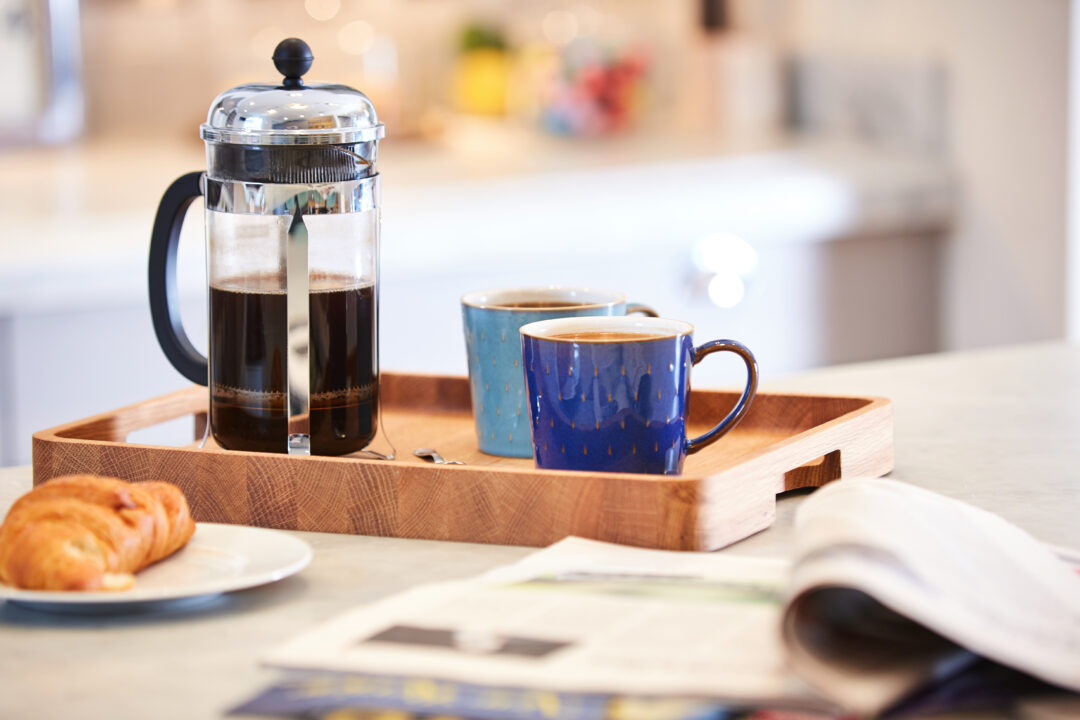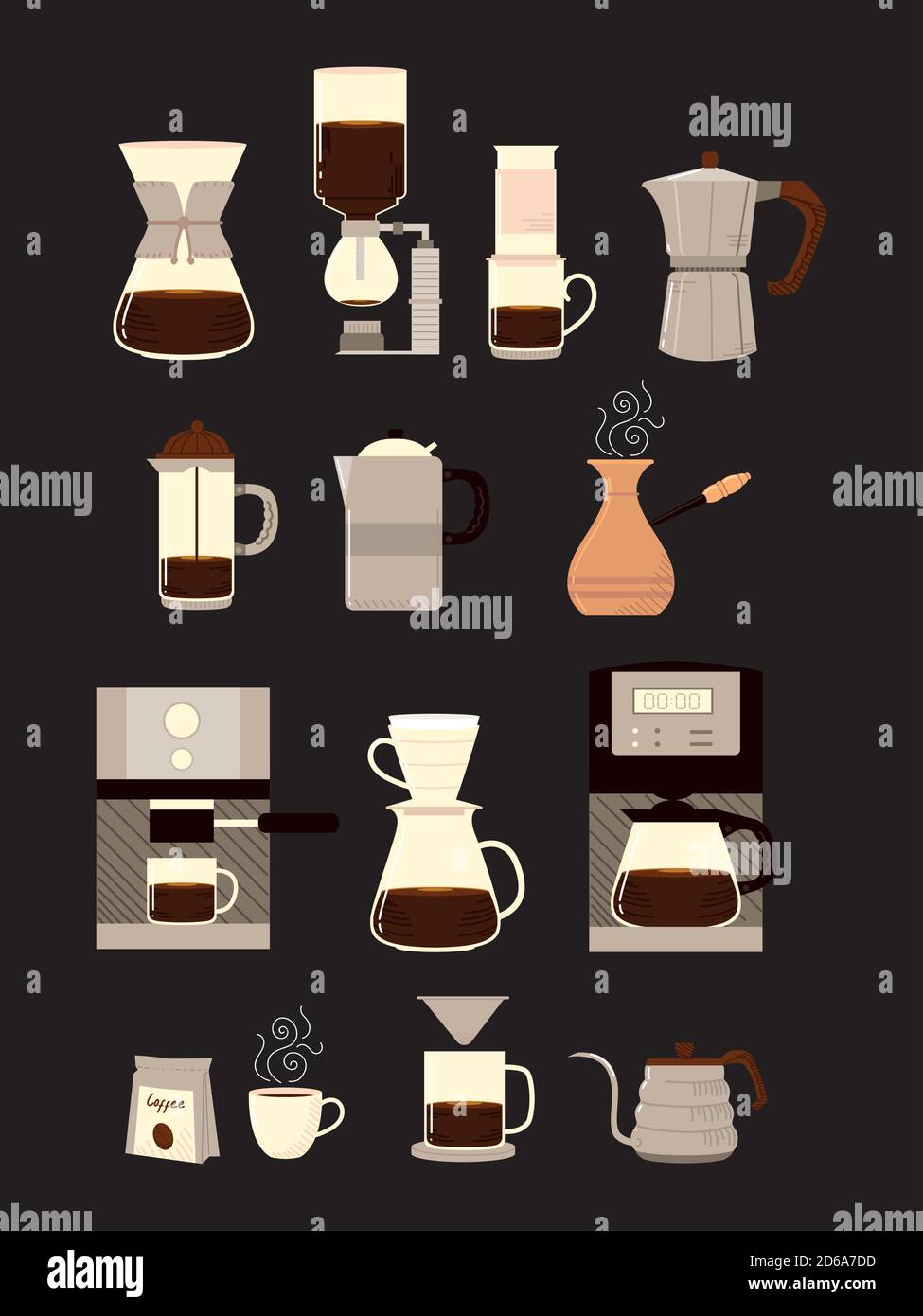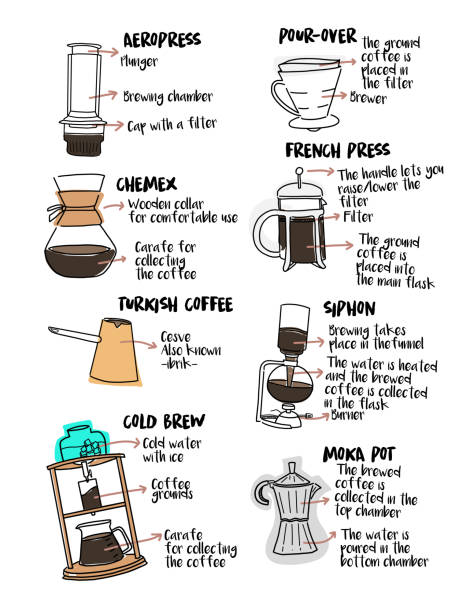The Ultimate Contrast of Popular Coffee Brewing Methods for Home Baristas
The Ultimate Contrast of Popular Coffee Brewing Methods for Home Baristas
Blog Article
Recognizing Different Coffee Developing Techniques for a Richer Taste Experience
A detailed understanding of different coffee brewing approaches can exceptionally impact your taste experience, revealing the detailed nuances of this precious drink. As you consider which approach ideal matches your taste choices, the question remains: just how do these approaches affect the last cup, and which might elevate your coffee experience to new heights?
Drip Coffee Machine
While many coffee lovers value the subtleties of different brewing approaches, the drip coffee machine remains a staple in offices and houses as a result of its simplicity and performance. This device runs by home heating water and permitting it to flow with coffee grounds, drawing out oils and tastes, which then leak right into a pitcher below.
The drip coffee machine is preferred for its capacity to make multiple cups simultaneously, making it suitable for busy mornings or events. Users can quickly personalize the toughness of their coffee by readjusting the quantity of coffee premises made use of or selecting a mixture strength establishing located in many contemporary devices. In addition, programmable attributes permit users to set a timer, guaranteeing a fresh pot of coffee is prepared upon waking.
Maintenance is fairly simple, as the majority of drip coffee makers require routine cleaning to remove mineral accumulation. Many designs are likewise geared up with attributes such as car shut-off, which boosts safety and security and power effectiveness. Inevitably, the drip coffee maker uses a dependable and straightforward alternative for those looking for a constant and pleasurable coffee experience without the complexities of even more fancy brewing approaches.

French Press
The French press offers an unique brewing experience that contrasts greatly with the automatic process of a drip coffee maker. This manual technique permits for an intimate communication with the coffee-making process, providing individuals greater control over various criteria, such as soaking time, coffee-to-water ratio, and grind size.
To brew coffee using a French press, coarsely ground coffee beans are soaked in warm water for approximately four minutes. This immersion technique removes abundant oils and tastes from the coffee, leading to a full-bodied beverage that highlights the nuances of the beans used. The metal or nylon mesh filter of the French press enables vital oils to continue to be in the brew, adding to its durable taste profile.
When utilizing a French press, it is necessary to pay attention to the brewing time and water temperature level, as these factors substantially influence the final preference. Trial and error with various coffee varieties and steeping durations can bring about a customized flavor experience. Overall, the French press is a gratifying and accessible technique for coffee enthusiasts seeking to strengthen their gratitude for the intricacies of their preferred drink.
Pour-Over Techniques
Pour-over strategies raise the coffee brewing experience by permitting specific control over every facet of the process, from water temperature level to pouring method. This approach includes manually putting warm water over coffee premises in a filter, usually situated in a dripper, which allows for optimal extraction of tastes.
To begin, picking the ideal coffee work is vital; a medium to medium-fine grind works best to ensure appropriate water circulation and extraction (coffee brewing methods). Next, water temperature level need to preferably vary in between 195 ° F and 205 ° F, as this range removes the very best flavors without scalding the coffee
The putting technique likewise plays a vital role. A slow-moving, circular motion when saturating the grounds can assist evenly extract oils and tastes. It's typically recommended to enable the coffee to grow for 30 seconds after the initial put, which allows co2 getaway and boosts taste growth.
Espresso Machines
For those seeking a various yet similarly gratifying brewing experience, espresso machines supply a distinct method of coffee prep work that emphasizes pressure removal. This process entails forcing hot water through finely-ground coffee at roughly 9 bars of pressure, leading to a concentrated shot of coffee that showcases rich flavors and fragrances.

The top quality of coffee is influenced by several aspects, including work size, dosage, water temperature level, and extraction time. Attaining the best espresso shot requires technique and attention to detail. Additionally, the espresso works as a base for different coffee beverages, such as lattes, cappuccinos, and Americanos, making it a versatile choice for coffee enthusiasts.

Cold Mixture Approaches
Cold mixture coffee has gotten popularity for its smooth, low-acidity profile and rejuvenating taste, making it an excellent option for cozy weather condition or those conscious standard developing techniques - coffee brewing methods. The process of cool developing generally entails soaking coarsely ground coffee beans in cool or space temperature water for an extended period, typically 12 to 24 hr. This technique extracts tastes in different ways than warm water, leading to a rich, complex brew that highlights chocolatey and fruity notes
There are numerous cold mixture approaches available, consisting of immersion and drip developing. The immersion method is the most simple; merely integrate coffee and water in a container, allow it steep, and afterwards remove the grounds. Conversely, the drip technique utilizes a specialized coffee maker to slowly drip water with coffee premises, enabling a much more regulated extraction procedure.
No matter the technique selected, the coffee-to-water hop over to these guys ratio is important, typically suggested at 1:4 for a focused brew that can be diluted with water or milk prior to serving (coffee brewing methods). Cold brew can be offered over ice, blended with flavored syrups, or made use of as a base for different coffee drinks, using adaptability like this and a special preference experience
Verdict
To conclude, exploring numerous coffee developing approaches dramatically enhances the taste experience. Each method, consisting of drip coffee machine, French presses, pour-over methods, coffee machines, and cool mixture, supplies unique benefits and one-of-a-kind taste accounts. Engaging with these diverse developing processes not only boosts recognition for coffee's complexity however likewise equips people to tailor their coffee pleasure according to individual choices. Eventually, proficiency of these methods can bring about a much deeper understanding of coffee's detailed tastes and scents.
Individuals can conveniently personalize the toughness of their coffee by adjusting the amount of coffee premises used or picking a brew stamina setting discovered in lots of modern-day makers. Eventually, the drip coffee manufacturer supplies a reputable and easy to use alternative for those seeking a regular and enjoyable coffee experience without the complexities of more elaborate developing methods.
To brew coffee using a French press, Recommended Reading coarsely ground coffee beans are soaked in warm water for approximately 4 minutes. Alternatively, the drip technique uses a customized coffee manufacturer to gradually trickle water with coffee premises, permitting for an extra regulated removal process.
Engaging with these diverse brewing refines not just boosts gratitude for coffee's intricacy but additionally empowers people to tailor their coffee enjoyment according to personal choices.
Report this page